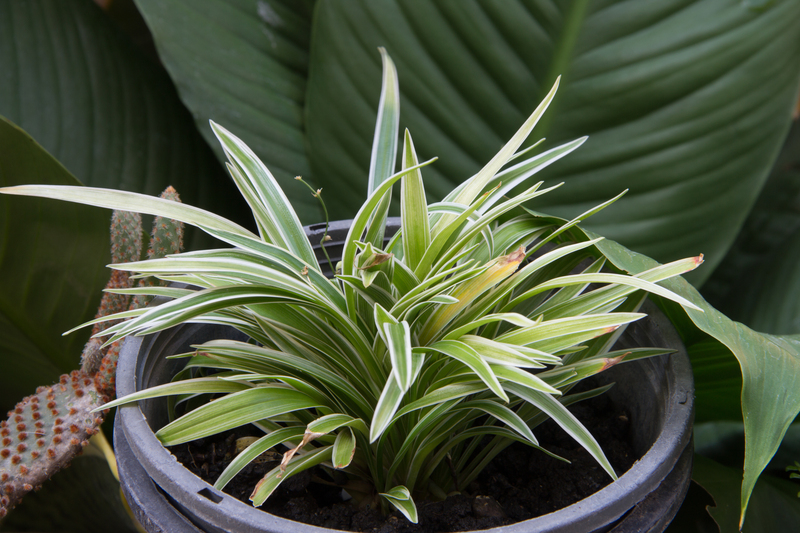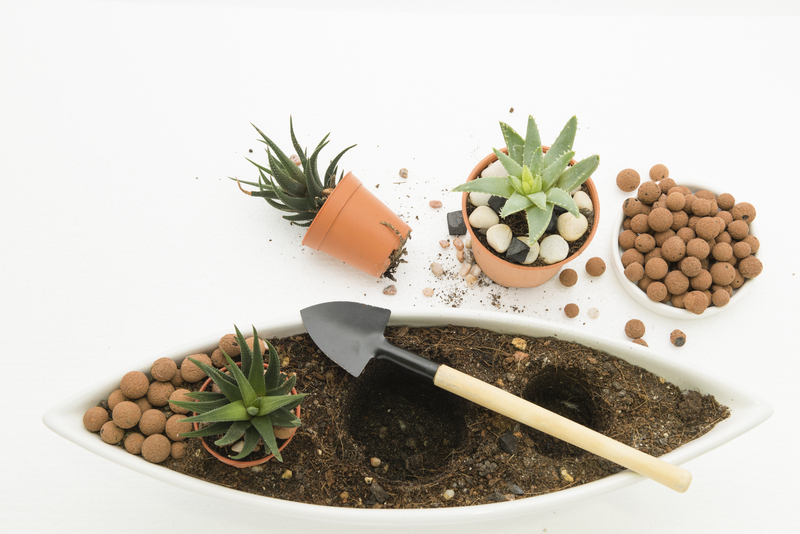Simple Tricks to Keep Your Lawn Green When the Heat Hits
When summer temperatures surge, even the most well-kept lawns can struggle to survive. But a green, healthy lawn isn't a distant dream--even during a scorching heatwave! With the right techniques and a little extra care, you can protect your grass from sunburn, drought, and other summer stressors. In this comprehensive guide, discover simple tricks to keep your lawn green when the heat hits--ensuring your yard remains the envy of your neighborhood all season long.
Why Lawns Suffer During Hot Weather
Rising temperatures can wreak havoc on your turf. Grass can wilt, turn brown, and thin out as it struggles to balance water loss and nutrient intake. Drought conditions, poor soil quality, and improper lawn maintenance only amplify the heat's adverse effects. Understanding the common issues is the first trick to keeping your grass green during hot spells.
- Increased evaporation: The sun quickly dries out soil, depriving roots of moisture.
- Heat stress: High temperatures cause grass to go dormant or die back.
- Soil compaction: Hard, compacted soil impedes root growth and water absorption.
- Pest & disease pressure: Weaker grass is more vulnerable to bugs and fungal infections.

Tips and Tricks to Keep Your Lawn Green in Hot Weather
1. Water the Right Way
Watering is the single most important factor in keeping your lawn lush during a heat wave. But more isn't always better--the key lies in how and when you water.
- Water deeply but infrequently: Give your lawn a good soak (about 1 inch) 1-2 times per week instead of shallow daily watering. This encourages deep root growth and drought tolerance.
- Water early in the morning: Before 9 a.m. is ideal. This minimizes evaporation and fungal growth, allowing the grass to absorb moisture effectively.
- Avoid midday watering: Watering at the hottest part of the day wastes water and can even scorch your grass blades.
- Check your soil: Insert a screwdriver or soil probe to ensure water is reaching 4-6 inches deep.
EPA WaterSense advises regular checks for water runoff and adjusting your sprinkler system as needed.
2. Mow Smart--Not Short
Did you know your mowing habits can spell the difference between a green and brown lawn?
- Keep grass longer: Raise your mower blade to 3-4 inches. Taller grass provides shade for the soil, reduces evaporation, and promotes strong root growth.
- Never remove more than 1/3 of the blade height: Cutting too short stresses the grass, making it more vulnerable to heat.
- Leave clippings: Grass clippings naturally return moisture and nutrients to your soil--a method known as "grasscycling".
- Keep your blade sharp: Dull blades tear the grass, increasing water loss and disease risk.
3. Feed and Fertilize With Care
While a healthy lawn needs nutrients, summer isn't always the best time for aggressive fertilizing. But with the right strategy, you can boost green growth without risking burn.
- Apply slow-release fertilizers: These feed your lawn gradually and reduce the risk of chemical burn.
- Avoid high nitrogen fertilizers during heatwaves: Too much nitrogen encourages leaf growth at the expense of roots, making grass more vulnerable to heat and drought.
- Fertilize in early spring or fall: If you must feed in summer, use a light touch and water in well.
- Consider organic fertilizers: Compost and natural fertilizers are less likely to burn and improve soil health in the long term.
4. Aerate and Improve Your Soil
Compacted, clay-heavy, or poor-quality soil prevents water and nutrients from reaching your lawn's roots. Soil aeration is a simple trick that can make a huge difference in keeping your lawn green during summer heat.
- Aerate in early summer or fall: Use a core aerator to remove plugs of soil and relieve compaction.
- Add organic matter: Top-dress with compost or fine mulch to improve water retention and soil structure.
- Correct soil pH: Most grasses prefer a pH between 6 and 7. Test periodically and amend with lime or sulfur as needed.
5. Mulch and Shade for Stress Relief
Protecting soil from direct sun and minimizing moisture loss helps maintain a green lawn even when the heat ramps up.
- Mulch around trees and garden beds: 2-3 inches of organic mulch (such as bark or straw) locks in moisture and keeps roots cool.
- Use shade creatively: Temporary shade cloths or planting shade trees strategically can provide relief to stressed sections of lawn.
6. Choose the Right Grass for Your Region
Not all grasses are created equal--and some withstand heat far better than others. If you're struggling year after year, consider overseeding or replanting with a more drought- and heat-tolerant variety.
- Cool-season grasses (fescue, rye, Kentucky bluegrass): Thrive in spring and fall, but suffer in high heat.
- Warm-season grasses (Bermuda, buffalo, St. Augustine, zoysia): Grow best in hot summer climates, requiring less water once established.
Consult with your local garden center or extension service to determine the best grass types for your climate zone.
7. Manage Pests and Lawn Disease
Hot, stressed lawns become easy targets for pests and disease. Take preventive measures to keep your turf strong and green.
- Monitor your lawn weekly: Look for signs of grubs, chinch bugs, fungal patches or brown spots.
- Remove thatch build-up: Excess thatch harbors pests and prevents water from reaching roots. Dethatch as needed.
- Improve airflow: Trim shrubs and trees around your lawn to encourage air movement and reduce disease risk.
- Consider natural controls: Nematodes, beneficial insects, or organic fungicides can help without damaging your yard or the environment.
Bonus Tips: Simple Tricks to Stay Green All Summer Long
Let Your Lawn Rest When Needed
If severe drought or restrictions occur, allow cool-season lawns to go dormant. Grass naturally turns brown to conserve energy and will revive with fall rain.
- Avoid heavy foot traffic: Dormant grass is fragile--limit use during extreme heat.
- Keep mowing high, but less often: Don't scalp the lawn when it's stressed.
Adopt Sustainable Lawn Practices
Over the long term, a healthy soil ecosystem and smart lawn care routines will help your yard stay green, vibrant, and resilient to summer heat.
- Compost grass clippings & leaves: Return nutrients to your soil and reduce landfill waste.
- Use drought-tolerant landscaping: Incorporate native plants and groundcovers to reduce your lawn's water needs.
- Practice integrated pest management (IPM): Prevent issues before they start and avoid unnecessary chemicals.
Invest in Smart Lawn Tools
Modern technology can make keeping your grass green in the summer much easier.
- Soil moisture meters: Know exactly when your lawn needs water--reduce waste and stress.
- WiFi irrigation controllers: Automate your sprinkler system and adjust for weather conditions with ease.
- Robot mowers: Keep your grass clipped to the perfect height with minimal effort--less frequent mowing means less stress for your lawn.
Frequently Asked Questions: How to Keep Your Lawn Green in the Heat
- How often should I water my lawn during a heat wave?
Water deeply about 1 inch per week, preferably in one or two sessions rather than short daily watering. - Is it okay to fertilize my lawn during summer?
Fertilize lightly with a slow-release formula or compost. Avoid high-nitrogen products during extreme heat. - What is the best mowing height to keep grass green in summer?
Maintain grass at 3-4 inches to shade the soil and encourage deep root growth. - What if my lawn goes brown anyway?
It may be dormant, not dead. Reduce traffic and continue correct care; most grasses will recover when temperatures cool. - Are there grasses that stay green in the heat?
Warm-season grasses such as Bermuda, zoysia, and St. Augustine are more heat-/drought-tolerant than cool-season types.

Key Takeaways: Tricks for a Green Lawn During Summer Heat
- Water wisely: Deep, morning watering is best.
- Mow high and leave clippings for natural mulch.
- Feed carefully: Avoid over-fertilizing in heat.
- Aerate and amend soil to encourage root growth and water uptake.
- Choose the right grass for your climate zone.
- Be proactive: Watch for pests and diseases before they spread.
Conclusion: Enjoy a Green Lawn All Summer Long!
Summer doesn't have to mean brown, patchy grass. With these simple tricks to keep your lawn green when the heat hits, you can protect your investment and enjoy a beautiful, healthy yard throughout the hottest months of the year. From smart watering and proper mowing to soil health and pest control, these comprehensive tips ensure lush green grass is well within your reach--no matter where you live or how high the mercury climbs.
Don't let a heatwave defeat your lawn! With a little knowledge and commitment, your grass can remain resilient, lush, and inviting all season long. Start with one or two changes today and watch your lawn thrive, even in the face of summer's fiercest sun.